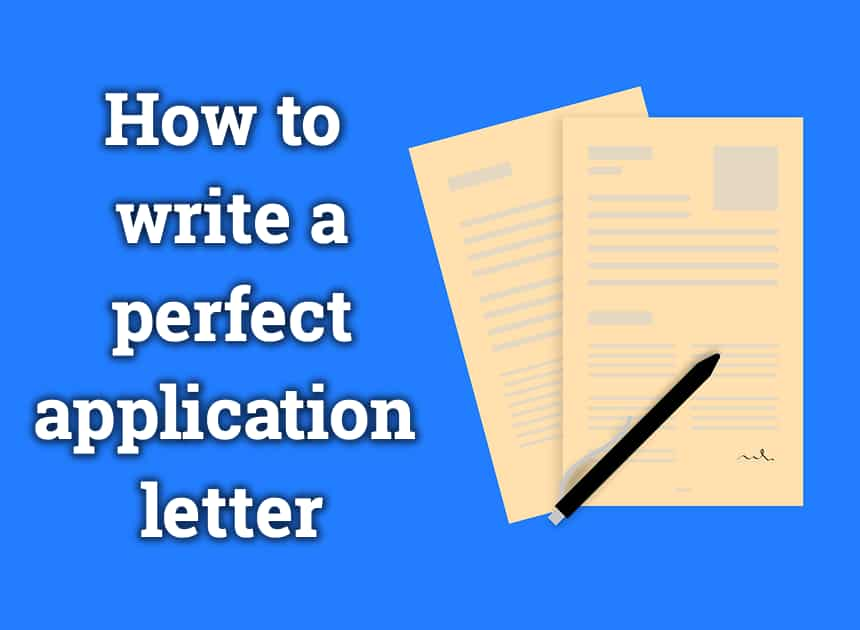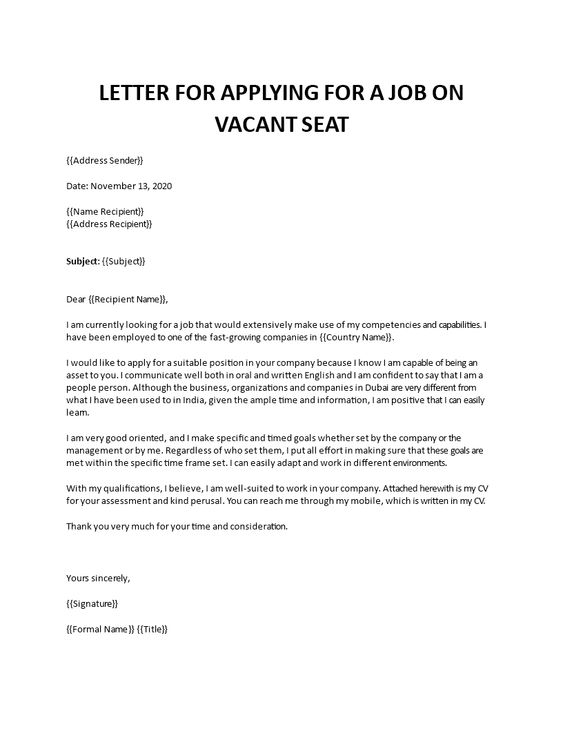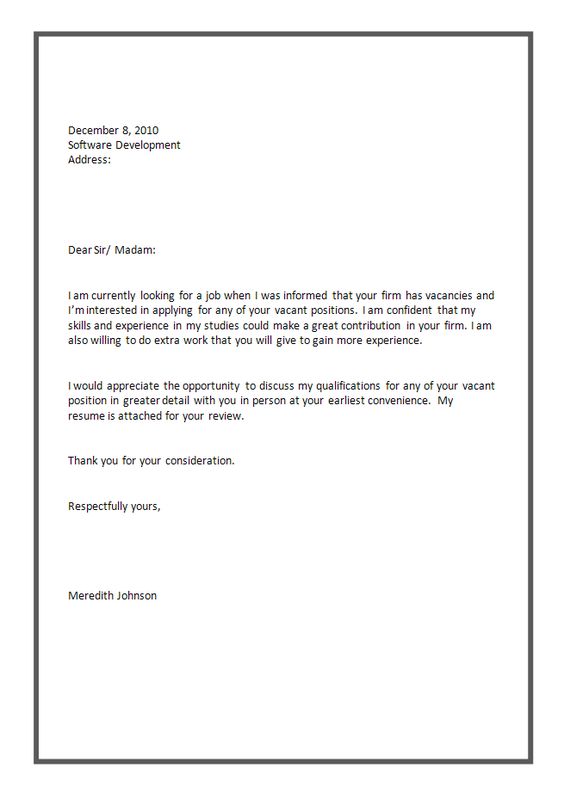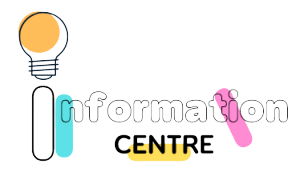
| Aspect | Description |
|---|---|
| Purpose of Application Letter | This is the core purpose of an application letter: – It serves as an introduction when applying for a job. – It accompanies your resume or CV, providing a personalized touch. – It allows you to customize your application for a specific job by highlighting relevant details. |
| Contents of Application Letter | The key elements included in an application letter: – Contact information (name, address, phone, email) for easy identification. – Mentioning the specific position you’re applying for to indicate clarity. – Highlighting your qualifications, skills, and experiences relevant to the job. – Expressing genuine enthusiasm for the job and the company to show your interest. |
| Importance of Customization | Customization is crucial for: – Tailoring the letter to the job’s specific requirements mentioned in the posting. – Addressing qualifications and skills emphasized in the job description. |
| Professionalism | Maintaining professionalism by: – Ensuring proper formatting and using correct grammar. – Demonstrating effective communication skills through clarity and coherence. |
| Stand Out | Stand out from other applicants by: – Providing more comprehensive information than the resume. – Demonstrating how your qualifications meet the job’s requirements effectively. |
| Express Interest | Expressing your genuine interest is vital: – Convey enthusiasm about the job opportunity to make a positive impression. – Explain why you specifically want to work for the company, showcasing your motivation. |
| Request for Consideration | Requesting consideration and an interview politely: – Politely ask for an interview, indicating your eagerness. – Express a desire to discuss your qualifications in more detail, highlighting your proactive approach. |
| Addressing Unique Circumstances | Addressing special circumstances such as employment gaps or career changes: – Use the letter to explain these situations in a professional and transparent manner. |
| Personalized Introduction | Creating a positive first impression: – Craft an engaging introduction to capture the employer’s attention immediately. |
| Emphasize Your Suitability | Highlighting your suitability for the job: – Showcase relevant skills and experiences that align with the job requirements. |
| Complements Resume | Providing a more in-depth view of your qualifications: – Offer additional, personalized details that complement the information on your resume. |
| Leave a Lasting Impression | Making a strong case for your candidacy: – Convey why you are the best candidate for the job, leaving a memorable impression on the employer. |
These simple points outline the key sections of a job application letter, making it easier to understand and follow the structure.:
1. Your Name and Contact Information:
- Your full name
- Contact number
- Email address
- Residential address
- Job title you’re applying for
2. Date:
- Mention the date of sending the application, not when you began writing it
3. Employer’s Name and Address:
- Hiring manager’s name
- Manager’s position
- Company name
- Complete company address
4. Salutation and Employer’s Name:
- Start with “Dear”
- Add proper salutation (Mr./Ms.)
- Include the hiring manager’s name
5. Opening Paragraph with Introduction:
- Introduce yourself
- Mention how you found out about the job
- Specify your interest in the job role
6. First Body Paragraph with Skills and Qualifications:
- Describe your distinct skills and qualifications
- Highlight your professional achievements
- This section focuses on your key skills
7. Second Body Paragraph:
- Explain why you are a suitable candidate for the job
- Express how you can benefit the company
- Show your eagerness and interest in the company
8. Closing Paragraph with a Call-to-Action (CTA):
- End with a CTA statement
- Encourage the recruiter to consider your application
- Express a desire for further discussions
9. Signing Off with Your Signature:
- Conclude the letter professionally
- Use “Sincerely” followed by your signature
- Optionally, write “Enclosure” followed by your name and links to attached documents
Here’s a step-by-step checklist to ensure your cover letter is well-edited and free of errors:
- Read It Aloud: Reading your cover letter aloud can help you catch awkward phrasing, grammatical errors, and overall flow issues.
- Check for Spelling and Grammar: Use spelling and grammar checking tools, like spell check in your word processing software or online tools like Grammarly, to catch any mistakes.
- Punctuation: Ensure that all punctuation marks are used correctly, and look out for issues like missing or unnecessary commas, periods, and apostrophes.
- Consistency: Maintain consistency in the use of verb tenses, formatting, and overall style throughout your cover letter.
- Clarity: Make sure your sentences and paragraphs are clear and concise, avoiding overly complex sentences or unclear phrasing.
- Avoid Jargon: Don’t use industry-specific jargon or acronyms unless you’re sure the reader will understand them.
- Tense Usage: Be consistent with your verb tenses. If you’re currently employed, use present tense. For past positions, use past tense.
- Names and Titles: Double-check the spelling of names, titles, and company names. Ensure that you’re addressing the recipient correctly.
- Remove Redundancy: Eliminate any repetitive or redundant statements and make sure that your cover letter is concise.
- Formatting: Ensure that your formatting is consistent, including fonts, headings, and bullet points.
- Final Review: Give your cover letter one last review to ensure it addresses the specific job you’re applying for and provides a compelling case for why you’re a suitable candidate.
- Peer Review: If possible, ask a friend, family member, or colleague to review your cover letter. Fresh eyes may catch errors you missed.
- Customize for Each Job: Finally, remember to customize your cover letter for each job application by addressing the specific requirements and qualifications mentioned in the job posting.
The Differences between an Application Letter and a Cover Letter:
| Aspect | Application Letter | Cover Letter |
|---|---|---|
| Definition | A well-drafted document explaining the applicant’s qualifications, skills, and why the applicant is the best fit for the job role. | A short, precise introduction to the applicant’s qualifications and skills aimed at urging the employer to read the applicant’s resume. |
| Why it is used | Used to explain skills, experiences, and even reasons for employment gaps. | Provides limited information about the applicant. |
| Where it is used | Used to gain an employer’s attention for a specific job role, even if no vacancies exist, allowing for consideration in future opportunities. | Attached when applying for an open job role. An application letter can also be used for a specific job position, even when no hiring process is ongoing. |
| Length | Typically 1 page. | Typically 2 pages. |



Leave a Reply